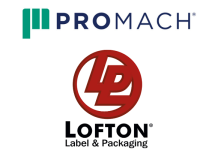On July 8, 2024, the United States FDA revised its draft guidance on tackling misinformation about medical devices and prescription drugs, providing a Q&A format for the industry. These updated suggestions offer various approaches for companies with FDA-approved or FDA-cleared products to counteract misinformation concerning their products.
Medical misinformation poses a significant threat to the healthcare sector, gaining more prominence during the COVID-19 pandemic when false information about the virus, mRNA vaccines, and treatments was widespread.
At a broad level, medical misinformation can lead to incorrect healthcare decisions by patients and providers, resulting in adverse or potentially fatal outcomes.
However, industry stakeholders and leaders can play a pivotal role in countering and correcting misinformation.
Robert M. Califf, MD, the FDA Commissioner stated in a press release that the regulated industry happens to play a significant role in ensuring that consumers have precise information when it comes to medical products. The updated draft guidance is intended to provide the industry with greater clarity and flexibility to promptly and proactively address misinformation. He highlighted the ongoing risk posed by the spread of rumors about science and medicine, stressing the FDA’s commitment to tackling this public health issue and urging all parties in the public health ecosystem to actively participate.
The guidance details tools for identifying and addressing misinformation related to a firm’s approved or cleared product, whether found in online communications or spread by third parties.
For instance, companies can refer to the examples in the guidance to manage misinformation propagated by an unaffiliated influencer or celebrity in the media.
In essence, the guidance outlines steps for companies to assist in addressing medical misinformation.
Additionally, the FDA is taking steps to combat misinformation by offering timely, accurate, and understandable information to news outlets, creating resources for common questions, engaging with the public on medical products and public health issues, providing resource toolkits, and publishing regulatory documents that outline FDA decisions.




























